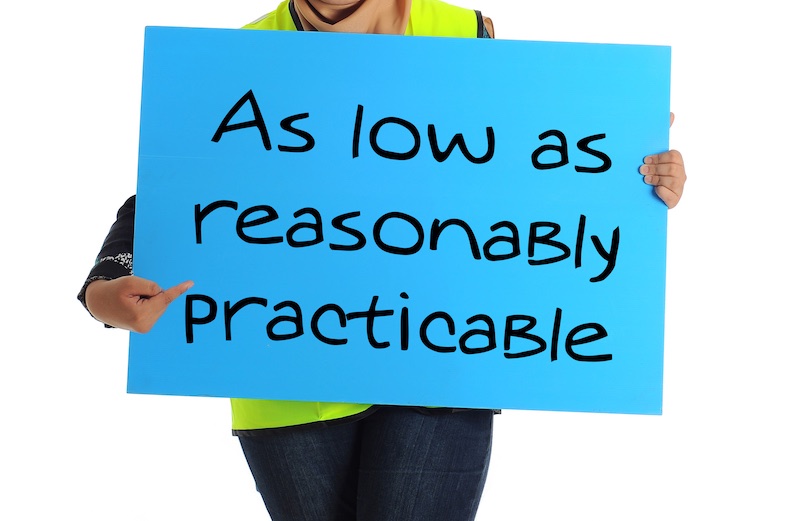This article provides a Health and Safety at Work ACT 1974 summary.
You can read the full Act here – https://www.legislation.gov.uk/ukpga/1974/37/contents
The Health and Safety at Work Act 1974 is the predominant legislation in the field of health & safety in the UK.
The HSE Act established the broad duties and obligations of both employers and employees in this area.
For short it is also known variously as ‘The Act’, ‘The HSE Act’ or sometimes ‘HASAWA’.
LEGISLATION BACKGROUND
For a quick background, Acts are passed by Parliament and are often written vaguely, leaving courts or regulations to detail their specific meaning.
For example, a key phrase in the 1974 act is ‘so far as reasonably practicable’. This refers to the effort’s employers must take to protect health and safety of staff. But what does ‘reasonably practicable’ mean, practically speaking? Courts will determine this and their decisions create ‘precedents’.
Over time Regulations have been written that give more details about how to comply with the HSE Act 1974. Regulations are created by parliamentary committees and referred to as subsidiary or secondary legislation. Regulations do not need passed by parliament but still carry the force of law.
The Health and Safety at Work 1974 ACT has many subsidiary regulations. For example.
- Control of Substances Hazardous to Health 2002 (COSHH)
- Manual Handling Operations Regulations 1992
- Health & Safety (First-Aid) Regulations 1981
- Health and Safety (Display Screen Equipment) Regulations 1992 (DSE)

OBJECTIVES OF THE HSE ACT
The main objectives of the health and safety at work act are.
- Secure the health, safety and welfare of people at work
- Protecting people from unreasonable risks to their health and safety arising from work activities

The general concept of the act is to encourage individuals and organisations to consult, inform and advise each other of risks and concerns in the field of health and safety.
WHO DOES THE ACT APPLY TO?
Duties are imposed both on ALL individuals and employing organisations.
The Act applies to all work activity and situations. It imposes duties on everyone concerned with work and workplace activities. This includes: employers, the self-employed and employees; manufacturers, designers and suppliers; and people in control of premises.
Related articles
- What is corporate manslaughter?
- Safety Management – Small business
- Safety Management systems – large business
- Other General Laws around HSE
- HSE Enforcement Policy
Next we provide a summary of key sections of the health and safety at work act 1974.
HSE Section 2 Summary
General Duties of Employers to their Employees
This section defines the efforts or resources employers must deploy to keep employees safe. The Act states – “Every employer has to ensure, so far as is reasonably practicable, the health, safety and welfare at work of all his employees.” This is known as the ‘general duty‘.
The Act expands on this ‘general duty’ by requiring employers to ensure;
- The provision and maintenance of plant and systems of work that are safe and without risks to health
- Arrangements for ensuring health and safety with the use, handling, storage and transport of articles and substances;
- The provision of information, instruction, training and supervision to ensure, the health and safety at work of employees; (Hence the popularity of our online safety training.)
- Maintenance of any workplace, under his control, in a healthy and safe condition, including any means of access and egress; and
- The provision and maintenance of a safe and healthy working environment with adequate facilities and arrangements for the welfare of employees at work.
HSE Section 3 Summary
Duties to non-employees
This section defines what employers must do to keep the general public and contractors safe from their activities. The Act states “Every employer has a duty to conduct his undertaking in such a way as to ensure, so far as is reasonably practicable, that persons not in his employment, who may be affected, are not exposed to risks to their health and safety.”
As mentioned The Act is written in broad language. Courts refine the meaning. A 1994 case helped show employers how far their duties extent to contractor organisations under Section 3 of The Act.
Test Case 1994 | R v Associated Octel Ltd
Associated Octel Ltd maintained its plant and equipment during factory shutdown each year. In 1990, this work was carried out by Resin Glass Products (RGP) Ltd as contractors. An employee of RGP cleaning the inside of a tank was badly burned because of an explosion inside the tank.
RGP Ltd was convicted under section 2 of the Act and Associated Octel Ltd was convicted under section 3 for failing to protect non-employees from health and safety risks from their “undertaking.”
Associated Octel appealed arguing that RGP was an independent contractor and that the work was not part of Associated Octel’s ‘undertaking’ and that Section 3 of The Act did not involve liability for the actions of independent contractors.
The appeal was dismissed. The word “undertaking” means “business” or “enterprise” and this activity was clearly part of Associated Octel’s ‘undertaking’ as the tank was part of their plant and the work formed part of their planned maintenance programme.
The court deemed that associated Octel should have specified the necessary requirements for avoiding risks to health and safety.
HSE Section 4 Summary
Duty of person in control of premises
Section 4 of the health and safety at work act outlines the duties of organisations to keep premises they own safe.
The Act states, “Any person who has, to any extent control of…
- Work premises
- The means of access or egress
- Any plant or substance in such premises
…has a duty to take all reasonable measures to ensure that all are safe and without risks to the health of both employees and non-employees.”
This duty overlaps with the general duties of sections 2 and 3. The aim with section 4 is to place a duty on whoever has the power to remedy a particular source of hazard if its not clearly an employer or contractor.

HSE Section 6 Summary
Duties to designers, manufacturers, importers, suppliers and installers
Section 6 extents responsibilities for safe beyond employers and to any organisation that supplies equipment. The Act states “Any person, who designs, manufactures, imports, or supplies any article or substance for use at work has duties to ensure, so far as is reasonably practicable:
- That the article or substance is safe and without risks to health when properly used;
- Any necessary research and testing or examination of the article or substance is properly undertaken
- Adequate information is provided to ensure its safe use.”
So Section 6 requires directors and installers to ensure that nothing about equipment or structures intended for work is erected or installed makes it unsafe or a risk to health when properly used.

HSE Section 7 Summary
General Duties of Employees at Work
Section 7 defines the duties of employees for health and safety. The Act states “Every employee has the following two duties while at work
- To take reasonable care for the health and safety of himself and of other persons who may be affected by his work
- To co-operate with his employer so far as is necessary to enable the employer to comply with his own duties.”
HSE Section 8 Summary
Duty not to Interfere
Section 8 stands to reason but still must be written. It requires the nobody misuse safety equipment. The Act states “Duty to not interfere with or misuse anything provided in the interests of health, safety or welfare
No person shall intentionally or recklessly interfere with or misuse anything provided in the interests of health, safety or welfare whether for the protection of employees or other persons.”
This duty applies to all people, including children, be they at work or members of the public.
HSE Section 36
Offences Due to Fault of Another Person
Section 36 has the effect of moving responsibly up the chain of command. The Act states “If person ‘A’ commits an offence because of an act or default of person ‘B’, then person ‘B’ may also be charged and convicted of the offence as well as, or instead of person ‘A’.”
Effectively this means managers can be found responsible for the offences of subordinates.
This section also allows Crown servants, such as civil servants, to be prosecuted even though the Crown as employer is immune from prosecution.
A test case for Section 36 is know as R v Lockwood (2001).
Lockwood, an occupational hygienist, was successfully prosecuted under section 36 for failing to carry out a proper assessment of workers’ exposure to hazardous dust at a woodworking factory.
The woodworking company was also prosecuted under section 2. The court held that the company had not selected the best occupational hygienist for its needs. “… when relevant competencies are absent, it shows in the end result.”
HSE Section 37
Offences by a Body Corporate
Section 37 has the effect of extending responsibility to the top of organisations. The Act states “Where an offence committed by a body corporate is proved to have been committed with the consent, connivance, or neglect of any director, manager, secretary or similar officer, the director may also be charged and convicted of the offence.”
A test case for Section 37 is know as Director Prosecution (2011)
Anglia Lead Ltd and its director have been fined after workers were exposed to high levels of lead at its factory in Norfolk. Staff suffered the exposure as they cast molten lead into lead sheeting.
Anglia Lead Ltd had numerous health and safety failings. The HSE investigation found that the company and its director had:
- Failed to provide suitable and sufficient assessment of the risks to health created by work involving lead;
- Failed to adequately control exposure to lead;
- Failed to provide sufficient control measures, including lack of adequate personal protective equipment (PPE), no adequate local exhaust ventilation system to remove lead fumes from the workplace, no adequate clothes washing system and no adequate hygiene controls;
- Failed to provide employees with suitable information, instruction and training;
- Failed to suitably investigate when occupational exposure level limits were exceeded and action levels reached; and
- Failed to provide air monitoring as regularly as required.
The company appeared at Norwich Magistrates’ Court and admitted failing to ensure the health and safety of its workers, breaching Section 2(1) of the Health and Safety at Work Act. Director Carlton Edwards admitted committing the same offence in his capacity as a company director.
Magistrates fined the company £10,000 and Mr Edwards a further £10,000. The company was also ordered to pay full prosecution costs of £10,556.

HSE Section 40
Onus of Proving Limits of What is Practicable
Section 40 outlines how defendants may evidence their innocents. The Act states “In proceedings for an offence consisting of a failure to comply with a duty or requirement to do something so far as is practicable or reasonably practicable, the accused has to prove that it was not practicable or not reasonably practicable to do more than was done.”
This section is what leads to the documentation of risk assessments, training and other health and safety actions. Because this provide employers with evidence to support this innocence. It is know as the due diligence defence.
You now the key sections and responsibilities of The health and safety at work act. If you wish to learn more you can undertake our short Health & Safety for Managers course.



